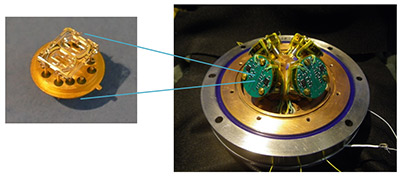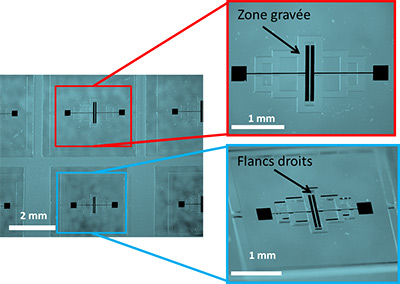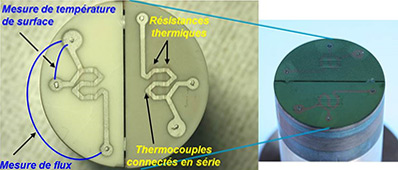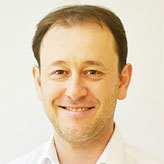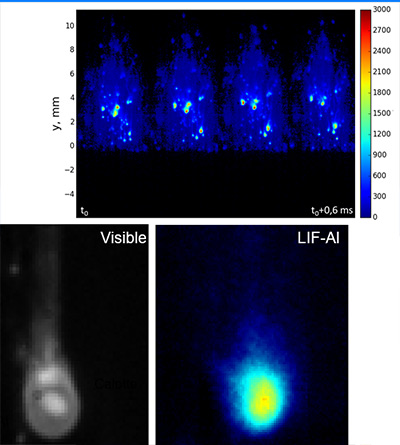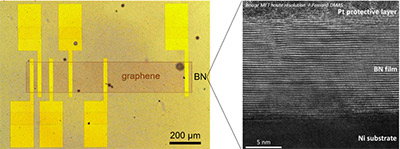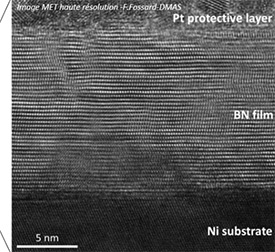Physics Domain - research topics of the Physics, Instrumentation, Environment, Space department (DPHY)
Scientific Officer
PHY research topics of the Physics, Instrumentation, Environment, Space department
- Models and measurements of the space environment DPHY
- Effects of the aerospace radiative environment on onboard systems DPHY
- Interaction of the space environment with materials DPHY
- Charging and electrostatic discharges on satellites DPHY
- Lightning, plasma and electric thrusters DPHY
- Instrumentation and metrology using laser spectroscopy DPHY
- Cold atom inertial sensors DPHY
- High-performance space accelerometry DPHY
- Micro/nano systems (MEMS/NEMS) and miniature inertial sensors DPHY
PHY stands for the Physics Scientific Domain of ONERA
Models and measurements of the space environment
DPHY Angélica Sicard, Sébastien Bourdarie [POC name.surname@onera.fr]
- Radiation belts
- Physical modeling
- Radiation environment specification
- Data assimilation, learning
- Radiation monitor
Examples
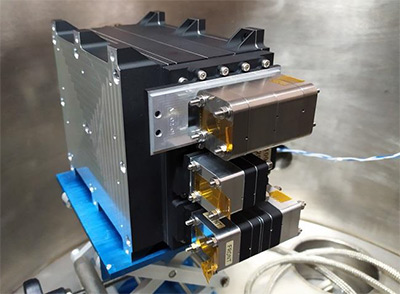
Low-energy proton sensor With the new stationing profiles for geostationary satellites, satellites are spending more time in the radiation belts. The few measurements available in such orbits show that current engineering models underestimate proton fluxes with energies between 1 and 15 MeV. A new detector head compatible with the ICARE-NG instrument (photo) developed by CNES, ONERA and EREMS has therefore been designed by ONERA and is on board an ADS-built EutelSat satellite.
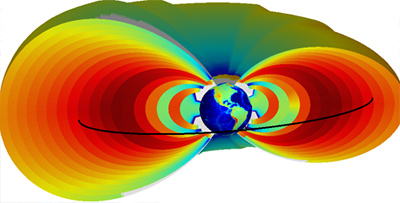
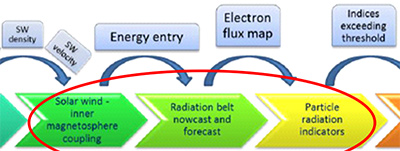
Effects of the aerospace radiative environment on embedded systems
DPHY Guillaume Hubert, Laurent Artola . [POC name.surname@onera.fr]
- Electronic systems
- Effects of radiation, singular effects (SEE)
- Cumulative effects
- Atmospheric natural radiation environment (NRE)
- Design hardening
- Avionics & space
Examples
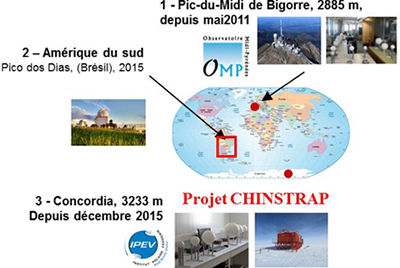
MUSCA SEP3-TERRIFIC multi-physics simulation platform Modeling singular-event failures in onboard electronics: radiative environment - radiation-matter interaction - semiconductor physics - circuit-level injection.
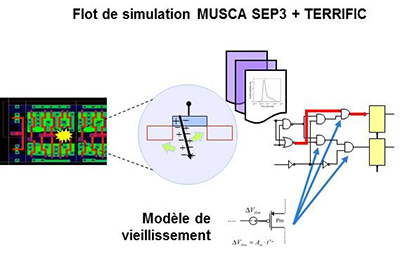
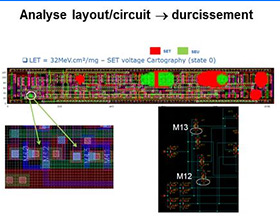
Interaction of the space environment with materials
DPHY Christophe lnguimbert, Laurent Artola [POC name.surname@onera.fr]
- Effect of space radiation
- Materials
- Semiconductor
- Polymer
- Contamination
This theme offers the European space industry expertise in the effects of radiation on materials used in spacecraft. This applies to thermal control coatings (paints), semiconductor materials used in photoreceptors, and flexible membranes used in stratospheric balloons, which also operate in harsh radiation environments. ONERA has a wide range of experimental resources for simulating the radiative space environment, combined with resources for characterizing the physical properties of these materials (thermo/optical and electronic properties, desorption, contamination, plasticity). We also offer the means to simulate these effects numerically.
Examples
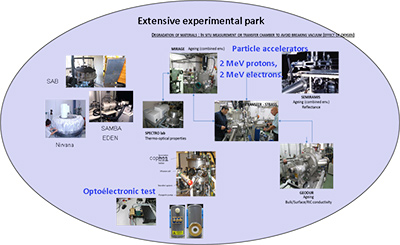
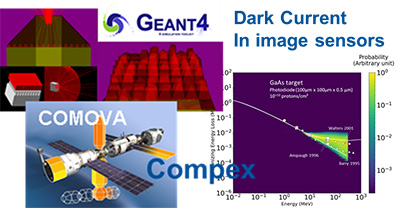
Charging and electrostatic discharges on satellites
DPHY Sébastien Hess, Pierre Sarrailh. [POC name.surname@onera.fr]
- Charging in orbit
- Electrostatic discharges, arcs, induced conductivity
- Electrical aging
- Plasma, particle/plasma satellite interaction
- Electronic emission
- Surface analysis
Examples
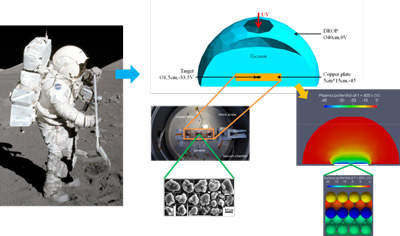
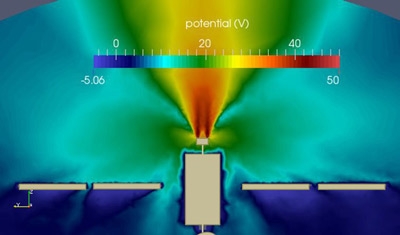
Lightning, plasma and electric thrusters
DPHY Paul-Quentin Elias, Denis Packan [POC name.surname@onera.fr]
- Lightning
- Plasmas, electric propulsion
- On-board instrumentation
- Plasma modeling
- High voltage and generators
- Magnetohydrodynamics
- Electrostatic discharges (ESD)
- Atmospheric risk characterization
Examples
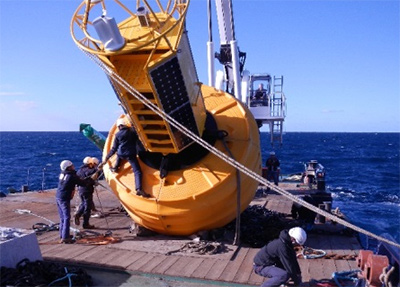
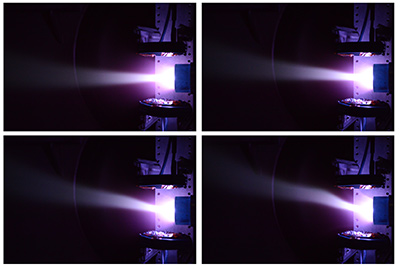
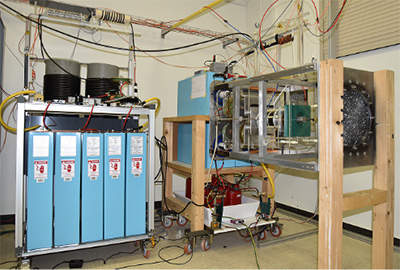
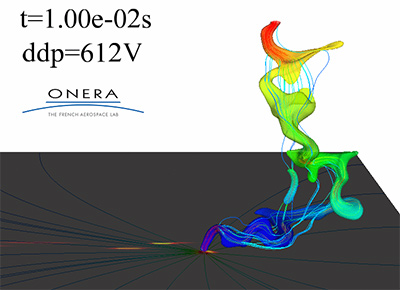
Instrumentation and metrology using laser spectroscopy
DPHY Michael Schermann, Myriam Raybaut [POC name.surname@onera.fr]
- Spectroscopy
- Thermometry, velocimetry
- Laser-induced fluorescence
- Spontaneous / coherent Raman scattering (CARS)
- Non-linear optics
- Laser diode absorption spectroscopy
- Optical oscillators and parametric amplifiers
- Controlling the spectral content of coherent sources
- Photo-acoustic spectroscopy
- Gas sensors, differential absorption lidar
- Laser diode absorption spectroscopy
- Frequency combs
- Quantum optics sensors
Examples
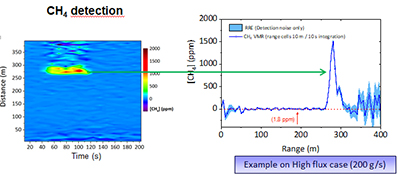
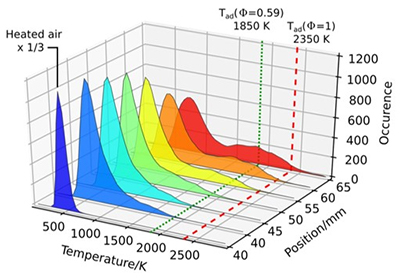
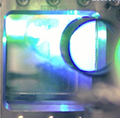 Femtosecond Coherent Raman Spectroscopy bench An innovative laser architecture has enabled the assembly of such a femtosecond CARS bench operating at high repetition rate (1-5 kHz). Developed for temperature measurement in gases, it has been successfully deployed on ONERA's representative MICADO aeronautical combustion bench.
Femtosecond Coherent Raman Spectroscopy bench An innovative laser architecture has enabled the assembly of such a femtosecond CARS bench operating at high repetition rate (1-5 kHz). Developed for temperature measurement in gases, it has been successfully deployed on ONERA's representative MICADO aeronautical combustion bench.High-repetition-rate LIF imaging bench A 10 kHz LIF (laser-induced fluorescence) imaging bench has been developed to characterize unsteady flows and/or transient phenomena. An original application to the aluminum atom (Al) was developed and implemented on solid propellant flames containing aluminum particles, to image the fluorescence of aluminum evaporated by the droplets during combustion.
The very intense fluorescence signal from aluminum makes it easy to detect, despite the very harsh conditions (high temperature and pressure, high flame luminosity, highly diffusive medium) that have hitherto prevented diagnostics based on laser spectroscopy techniques from being carried out under representative conditions. The combination of high repetition rate and intense atomic tracer gives excellent contrast instantly. This laser metrology tool provides innovative solutions for non-intrusive analysis of difficult media.
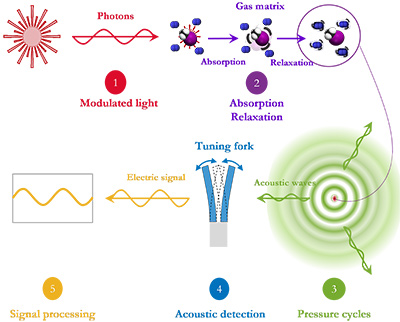
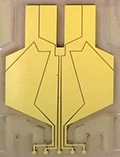 Sensors for local gas detection using photoacoustics Photoacoustics is a sensitive technique for the detection of trace gases, meeting the needs of a wide range of environmental, safety and security applications. In connection with the "Micro/nano-systems (MEMS/NEMS) and miniature inertial sensors" theme, we are developing sensors based on quartz micro-resonators specifically designed and produced to optimize detection performance.
Sensors for local gas detection using photoacoustics Photoacoustics is a sensitive technique for the detection of trace gases, meeting the needs of a wide range of environmental, safety and security applications. In connection with the "Micro/nano-systems (MEMS/NEMS) and miniature inertial sensors" theme, we are developing sensors based on quartz micro-resonators specifically designed and produced to optimize detection performance.Cold atom inertial sensors
DPHY Nassim Zahzam, Myriam Raybaut [POC name.surname@onera.fr]
- Inertial sensors
- Cold atoms
- Atomic interferometry
- Gravimeters
- Electromagnetic wave sensing using Rydberg atoms
Examples
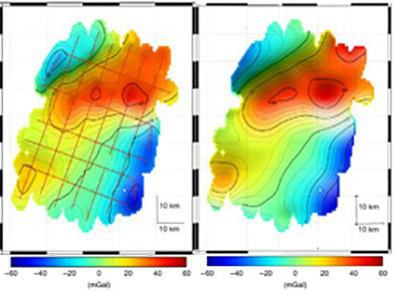
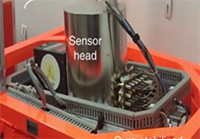 Onboard quantum gravimeter With support from the DGA, the "cold atom inertial sensors" team has developed a quantum gravimeter providing absolute gravity measurements from a boat or an aircraft.
Onboard quantum gravimeter With support from the DGA, the "cold atom inertial sensors" team has developed a quantum gravimeter providing absolute gravity measurements from a boat or an aircraft.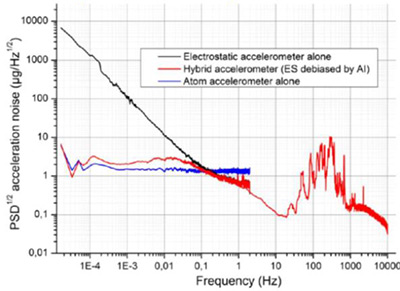
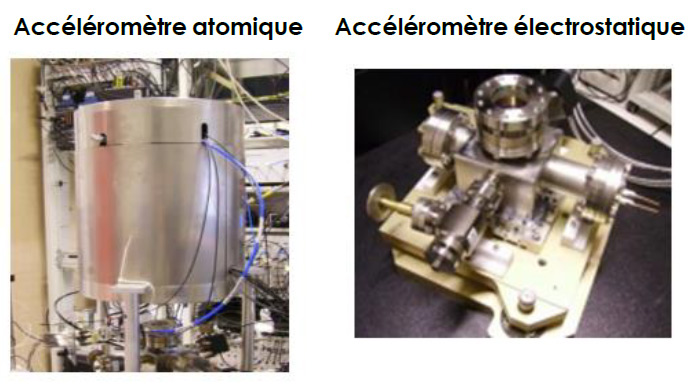 Hybridization of a quantum accelerometer and an electrostatic accelerometer for space geodesy With ESA support, the "cold atom inertial sensors" team has studied the combination of a quantum accelerometer and an electrostatic accelerometer for measuring the Earth's gravity field from space. Based on simulations and experiments, this concept looks very promising for future space geodesy missions.
Hybridization of a quantum accelerometer and an electrostatic accelerometer for space geodesy With ESA support, the "cold atom inertial sensors" team has studied the combination of a quantum accelerometer and an electrostatic accelerometer for measuring the Earth's gravity field from space. Based on simulations and experiments, this concept looks very promising for future space geodesy missions.High-performance space accelerometry
DPHY Joël Bergé, Manuel Rodrigues [POC name.surname@onera.fr]
- Electrostatic accelerometer, femto-g, pico-g
- Inertial sensor
- Satellite drag compensation, attitude control
- Geodesy
- Gravimetry
- Fundamental physics
Examples
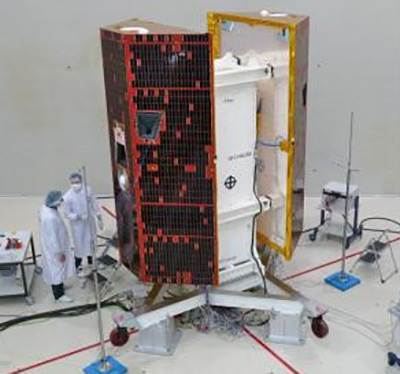
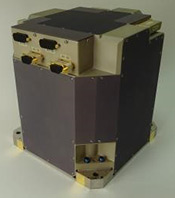
CHAMP, GRACE, GOCE, GRACE-FO Space accelerometers developed at ONERA have flown in these missions dedicated to mapping the Earth's gravity field.
These missions define the reference geoid in geophysics.
Here, the twin satellites of the GRACE-FollowOn mission (NASA, continuation of GRACE) and its ONERA accelerometer.
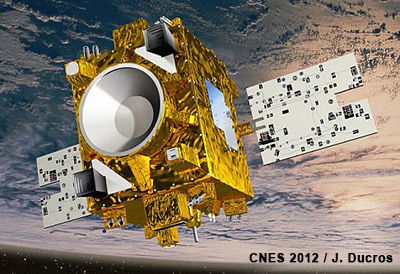
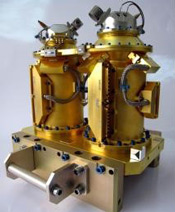 MICROSCOPE Thanks to their exceptional performance, the T-SAGE accelerometers allowed this CNES mission to perform the most precise test of the Equivalence Principle to date..
MICROSCOPE Thanks to their exceptional performance, the T-SAGE accelerometers allowed this CNES mission to perform the most precise test of the Equivalence Principle to date..Micro/nano systems (MEMS/NEMS) and miniature inertial sensors
DPHY Jean Guérard, Raphaël Levy [POC name.surname@onera.fr]
- MEMS, NEMS
- Micro/nano systems
- Vibrating inertial sensors
- Thin-film sensors
- 2D materials
Examples
